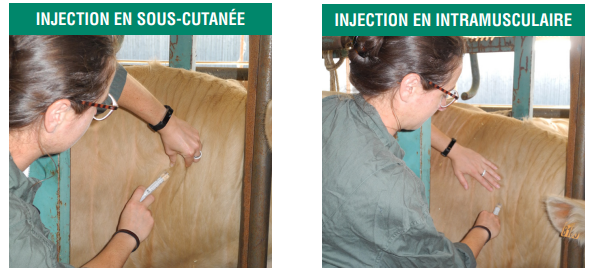The French beef sector aims to prevent antibiotic resistance by limiting the use of antibiotics in animal husbandry. The vaccination of grazers in cow-calf farmers not only limits the use of antibiotics in fatteners but also strengthens performance in fattening units and farms.
Description of the good practice
To help set up this practice, the sector has created an interprofessional guideline named "Sanitary preparation of grazers", whose aim is to vaccinate calves in breeding farms to limit the use of antibiotics in fattening farms. The guideline applies to live cattle sold for fattening and is intended for operators wishing to protect their animals against the main respiratory infectious agents encountered on fattening farms:
- Bovine Respiratory Syncytial Virus,
- Para Influenza Virus type 3,
- Mannheimia haemolytica.
These specific guidelines propose a framework guaranteeing buyers a higher level of health preparation of bovine animals intended for fattening, with the certainty for the breeder that the calf has been vaccinated according to guidelines set by the profession. The framework also guarantees economic security for the cow-calf farms, since the first buyer, who orders a vaccinated animal, covers the cost of the vaccination
The cost, which appears on the invoice sent by the by the selling breeder to the first buyer, includes :
- The price of the vaccine(s)
- The time required for vaccination operations (grouping of animals, restraint, injections...)
- Time spent on the annual internal control visit
- Administrative costs related to the establishment and grouping of traceability elements (maintenance of the livestock health record, preservation of prescriptions and invoices for vaccines, et.)
Two vaccination regimens are possible (and are to be discussed with the veterinarian):
The early vaccination scheme, which protects the animal from an early age and with a view to its sale (with a first vaccine before the animal is 4 months old), or a later vaccination (only two doses, one a month before departure and the other 15 days before). Multiple protocols can meet this option (with or without intranasal vaccination).
Early vaccination protocol

Later vaccination protocol

Impact on farm performance
As long as the cost is covered by the fattening farm, the financial impact is minimal on the calf breeder. If the calf breeder chooses an early vaccination protocol, the price of the first vaccine will be at his expense. However, an early vaccination will have positive impacts on his farm, by reducing the use of antibiotics, meaning a reduction in health costs (reduction of antibiotics and fewer visits of the veterinarian).
For the fattener, buying vaccinated animals from a breeder farm obviously means less use of antibiotics on his farm. Moreover, the grazers that have been vaccinated pre-emptively experience a more efficient start than the others, with improved performances: pre-vaccinated animals will gain on average 70 grams per day more than non-vaccinated animals
Types of vaccinations
Under the skin In the muscle

Farmer comment
According to a farmer in Charente, France: It offers operators in the sector who choose to commit to it a framework that guarantees a higher level of health preparation of cattle intended for fattening. It is a "win-win" approach: it guarantees the fattener a quality preparation to improve performance at the beginning of fattening and helps the breeder financially as the cost of vaccination for the grazers (young bovine) is supported by the fattening farm.
Further information
cahier-des-charges-broutards-prepares-section15dec20-signe.pdf (interbev.fr)
https://www.interbev.fr/ressource/preparation-sanitaire-des-broutards/